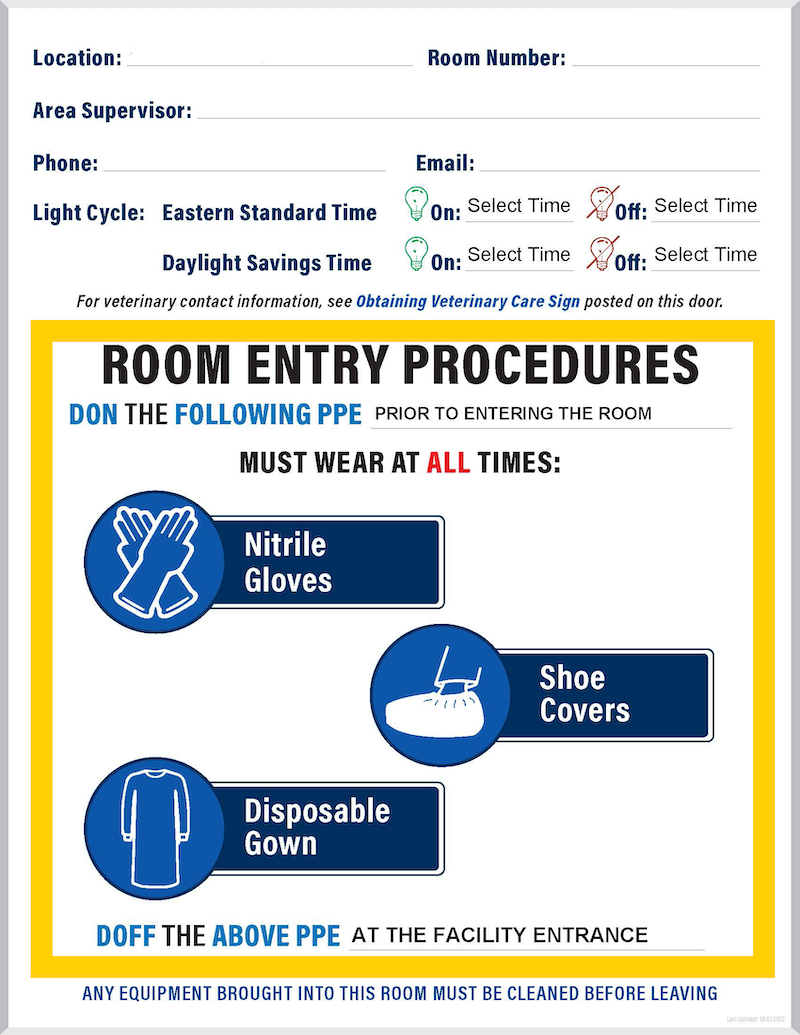You are here
- Home
- Announcements
- The Do’s and Don’ts of Proper Personal Attire in the Laboratory
The Do’s and Don’ts of Proper Personal Attire in the Laboratory
 Reviewing the basics of proper personal attire in the laboratory with your staff – including students – is critical for maintaining a safe and secure research environment for all personnel, as well as the animals entrusted to our care.
Reviewing the basics of proper personal attire in the laboratory with your staff – including students – is critical for maintaining a safe and secure research environment for all personnel, as well as the animals entrusted to our care.
REGARDLESS of outdoor weather conditions, please remember that personal attire worn in the laboratory and/or animal care facility should ALWAYS provide full coverage of the legs, feet, and torso.
DO Wear:
-
Shirts or tops that cover the upper torso.
Short-sleeve t-shirts are acceptable provided that a gown/laboratory coat is donned based on your facility’s required entry procedures. -
Shoes that completely cover the feet.
-
A laboratory coat whenever handling chemical, biological, or radiological materials. This requirement also applies to work at a laboratory bench and/or with equipment where such materials are handled.
-
Laboratory coats that are in good condition and appropriately cleaned when they become dirty due to spillage or other contamination.
-
Laboratory coats that have been laundered at a commercial facility (i.e., Cintas, Sohn Linen).
DO NOT Wear:
-
Shorts, skirts, or pants/capris that leave any part of the leg exposed.
-
Any shoes with holes (including sandals, ballet flats, open toe, open weave).
-
Pantyhose and/or nylons due to an increased risk of injury from chemicals or heat melting nylon to the skin.
-
Laboratory coats in animal rooms.
-
Laboratory coats that have been laundered at home or via a laundry service that is NOT equipped (e.g., a non-professional service) to specifically handle laboratory coats.
 Additional Resources
Additional Resources
- For a complete list of proper laboratory attire, review the U-M’s Chemical Hygiene Plan.
- Additional information about the varying levels of Personal Protective Equipment (PPE) required for working with different animal species and associated hazards can be found on the Environment, Health & Safety (EHS) website and in the EHS Animal Handler PPE Chart.
- Refer to all posted signage for specific room entry instructions and appropriate donning/doffing of required PPE (see sample room entry sign at right).
Questions?
Questions about proper laboratory attire, PPE, and/or environmental health and safety should be directed to EHS at ehs-animalsafety@umich.edu.